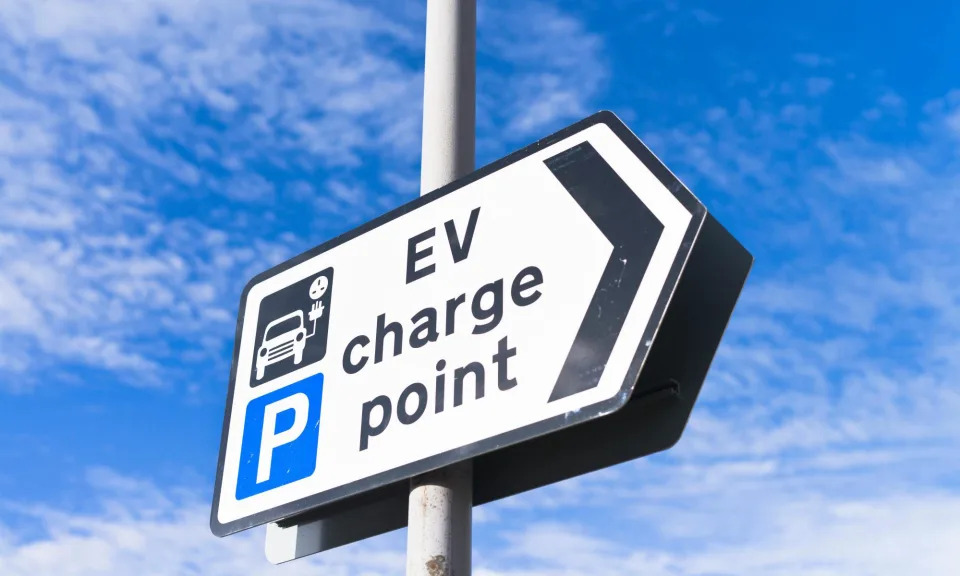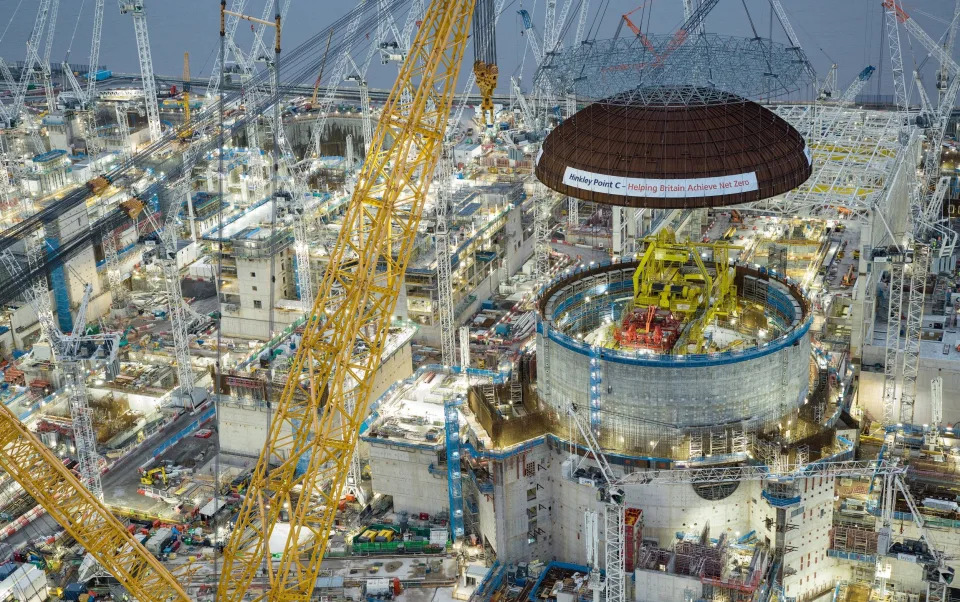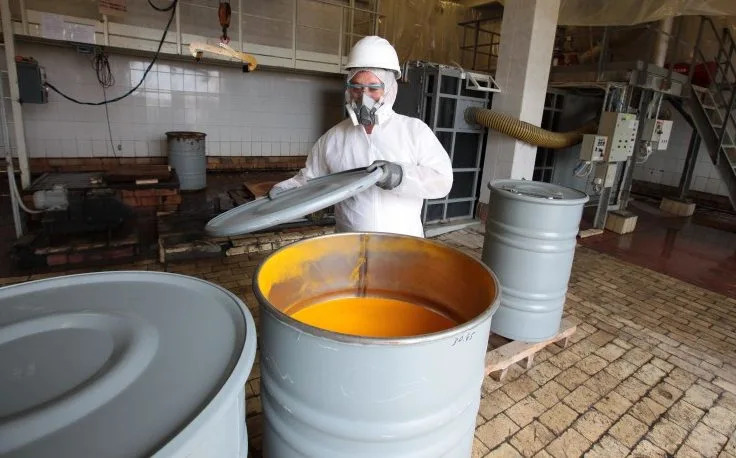China tensions rising, US revives WWII-era Pacific airfield
2023/12/30

This January 10, 2022 satellite image released on December 28, 2023 by Maxar Technologies shows the island of Tinian, where the US is reviving a World War II-era airfield
Washington (AFP) - In the middle of the Pacific ocean, an abandoned US airfield once key to dropping the nuclear bomb on Japan -- and nearly lost to history amid encroaching forest -- is being revived.
But as the Americans hack away at the jungle overgrowth at Tinian island airfield and other old, World War II-era bases across the region, it won't be with Japan on their mind.
Rather, it's Beijing's growing influence in the Pacific that is spurring the recovery of a slew of abandoned runways on the 40 square-mile (100 square-kilometer) speck of land that makes up Tinian, part of the US territory of the Northern Mariana Islands.
"Rehabilitation of World War II-era airfields has provided Pacific Air Forces (PACAF) a rapidly executable avenue to enhance infrastructure in the region," a spokesperson told AFP.
Though the statement mentioned a "sense of urgency" enabling PACAF to "enhance... warfighting capability and improve deterrent posture alongside Allies and partners," it did not mention China directly.
But Washington's plans for what officials have described as "an extensive" facility on Tinian comes amid a serious military pivot to the Pacific in recent years -- and as China builds its own new bases in the region, including in disputed waters.
"The most comprehensive and serious challenge to US national security is the (People's Republic of China's) coercive and increasingly aggressive endeavor to refashion the Indo-Pacific region and the international system to suit its interests and authoritarian preferences," the Department of Defense's 2022 planning document, called the National Defense Strategy, reads.
Tinian's old military airfield "has extensive pavement underneath the overgrown jungle. We'll be clearing that jungle out between now and summertime," Air Force General Kenneth Wilsbach recently told Japanese outlet Nikkei Asia.
Meanwhile, military projects for "fuel and airfield development" at the island's nearby civilian airport are already underway, according to the PACAF spokesman.
Back to the future
If little known now, the airfield at Tinian was perhaps the most important -- and the busiest -- in the world in 1945, as its six hastily built runways played host to US B-29 bombers carrying out missions against Japan, some 1,500 miles (2,300 kilometers) away.
Including, on August 6 and August 9 of that year, the planes that dropped nuclear bombs on Hiroshima and Nagasaki.
"Little Boy" and "Fat Man," as the weapons were known, killed some 200,000 people.
In the last three years, money annually allocated to Indo-Pacific military construction costs has doubled, from $1.8 billion in 2020 to just shy of $3.6 billion in 2023, according to a recent report from the Congressional Research Service (CRS).
It's part of a Pentagon strategy to open a range of flexible military bases, able to operate outside of the larger, longstanding installations in Japan, South Korea and the American island territory of Guam.
On Tinian, initial work started near the civilian airport in February 2022, before extending toward the World War II airfield on the north of the island.
Within two years, tarmac rehabilitation and the construction of fuel tanks are set to be completed, at a budget of at least $162 million, part of contingency plans in the event "access to Andersen Air Force Base or other western Pacific locations is limited or denied," according to Air Force financial documents reviewed by AFP.
Across multiple projects at Tinian, the total cost is unclear, "due to differing timelines and requirements, and the fact that not all work is being executed by the US Air Force," the PACAF spokesperson said.
No 'super bases'
Tinian isn't the only World War II-era base being revamped: new defense appropriations also include money for construction at Basa Air Base in the Philippines, "along with ongoing projects" at the Royal Australian Air Force's Darwin and Tindal bases, according to the PACAF spokesperson.
"A lot of our strategy there is taking many of the World War II airfields that frankly are overgrown by the jungle, and there's still concrete or asphalt underneath," Wilsbach said in a September speech.
"We're not making super bases anywhere. We're looking for a place to get some fuel and some weapons, maybe get a bite to eat and take a nap and then get airborne again."
Satellite images already show the extent of the work underway, including a new tarmac built just north of the civilian airport.
Not far off, satellite images show other military developments -- from China, which has created artificial islets among the diplomatically contested Spratly Islands, used to host its own air bases.
© Agence France-Presse
Washington (AFP) - In the middle of the Pacific ocean, an abandoned US airfield once key to dropping the nuclear bomb on Japan -- and nearly lost to history amid encroaching forest -- is being revived.
But as the Americans hack away at the jungle overgrowth at Tinian island airfield and other old, World War II-era bases across the region, it won't be with Japan on their mind.
Rather, it's Beijing's growing influence in the Pacific that is spurring the recovery of a slew of abandoned runways on the 40 square-mile (100 square-kilometer) speck of land that makes up Tinian, part of the US territory of the Northern Mariana Islands.
"Rehabilitation of World War II-era airfields has provided Pacific Air Forces (PACAF) a rapidly executable avenue to enhance infrastructure in the region," a spokesperson told AFP.
Though the statement mentioned a "sense of urgency" enabling PACAF to "enhance... warfighting capability and improve deterrent posture alongside Allies and partners," it did not mention China directly.
But Washington's plans for what officials have described as "an extensive" facility on Tinian comes amid a serious military pivot to the Pacific in recent years -- and as China builds its own new bases in the region, including in disputed waters.
"The most comprehensive and serious challenge to US national security is the (People's Republic of China's) coercive and increasingly aggressive endeavor to refashion the Indo-Pacific region and the international system to suit its interests and authoritarian preferences," the Department of Defense's 2022 planning document, called the National Defense Strategy, reads.
Tinian's old military airfield "has extensive pavement underneath the overgrown jungle. We'll be clearing that jungle out between now and summertime," Air Force General Kenneth Wilsbach recently told Japanese outlet Nikkei Asia.
Meanwhile, military projects for "fuel and airfield development" at the island's nearby civilian airport are already underway, according to the PACAF spokesman.
Back to the future
If little known now, the airfield at Tinian was perhaps the most important -- and the busiest -- in the world in 1945, as its six hastily built runways played host to US B-29 bombers carrying out missions against Japan, some 1,500 miles (2,300 kilometers) away.
Including, on August 6 and August 9 of that year, the planes that dropped nuclear bombs on Hiroshima and Nagasaki.
"Little Boy" and "Fat Man," as the weapons were known, killed some 200,000 people.
In the last three years, money annually allocated to Indo-Pacific military construction costs has doubled, from $1.8 billion in 2020 to just shy of $3.6 billion in 2023, according to a recent report from the Congressional Research Service (CRS).
It's part of a Pentagon strategy to open a range of flexible military bases, able to operate outside of the larger, longstanding installations in Japan, South Korea and the American island territory of Guam.
On Tinian, initial work started near the civilian airport in February 2022, before extending toward the World War II airfield on the north of the island.
Within two years, tarmac rehabilitation and the construction of fuel tanks are set to be completed, at a budget of at least $162 million, part of contingency plans in the event "access to Andersen Air Force Base or other western Pacific locations is limited or denied," according to Air Force financial documents reviewed by AFP.
Across multiple projects at Tinian, the total cost is unclear, "due to differing timelines and requirements, and the fact that not all work is being executed by the US Air Force," the PACAF spokesperson said.
No 'super bases'
Tinian isn't the only World War II-era base being revamped: new defense appropriations also include money for construction at Basa Air Base in the Philippines, "along with ongoing projects" at the Royal Australian Air Force's Darwin and Tindal bases, according to the PACAF spokesperson.
"A lot of our strategy there is taking many of the World War II airfields that frankly are overgrown by the jungle, and there's still concrete or asphalt underneath," Wilsbach said in a September speech.
"We're not making super bases anywhere. We're looking for a place to get some fuel and some weapons, maybe get a bite to eat and take a nap and then get airborne again."
Satellite images already show the extent of the work underway, including a new tarmac built just north of the civilian airport.
Not far off, satellite images show other military developments -- from China, which has created artificial islets among the diplomatically contested Spratly Islands, used to host its own air bases.
© Agence France-Presse



















